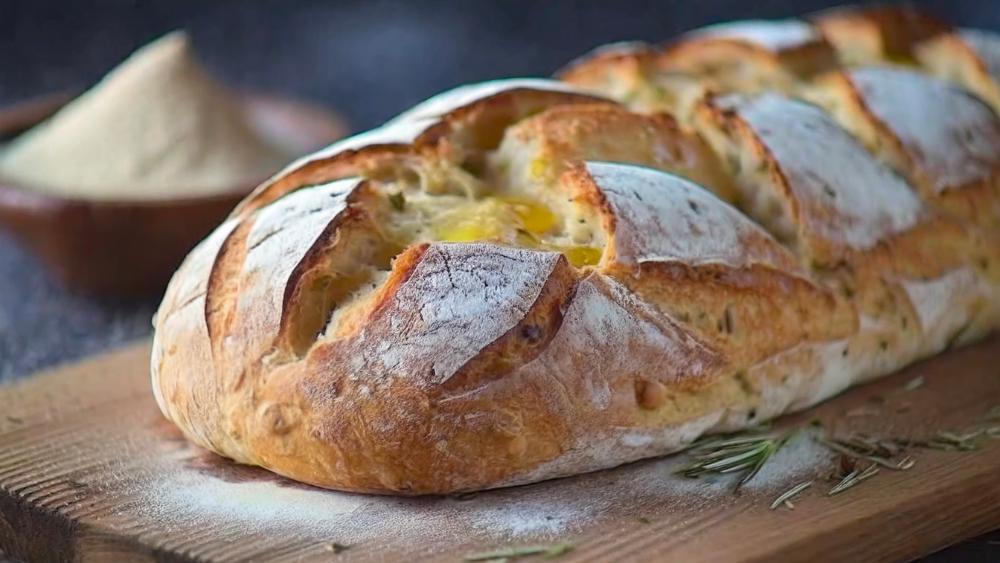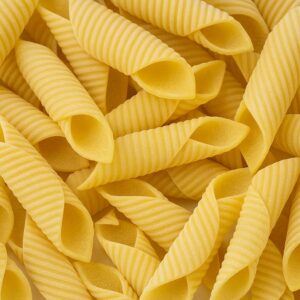
How are you dear chefs and cooks! Today at Paulina Cocina we are going to enjoy a delicious pan Italian: Ciabatta. A shoe-shaped bread that has a well-aerated crumb and a special crust to make crunchy with each bite.
Ciabatta is an Italian baguette that can be enjoyed in many ways, from a very Mediterranean sandwich to toast rubbed with garlic and olive oil. We leave you everything you need to know about this creation.
Its history, its characteristics, some ideas to enjoy it and some secrets to keep in mind when preparing it. At the end we leave you a ciabatta recipe to make at home and enjoy good Italian bread.
About the ciabatta
Ciabatta or ciabatta is much more than a simple bread; It is a masterpiece of Italian baking. This bread rustic style, crispy crust and fluffy crumb It stands out for its unique texture, ideal to prepare a sandwich, accompany meals or simply enjoy with a good olive oil.
Also known as ciabatta bread, it is a fairly modern creation, compared to other breads, but in just a few years it has managed to conquer palates around the world, thanks to its versatility and delicious flavor.
Characteristics of ciabatta
- Light and fluffy texture: Ciabatta is characterized by its honeycomb crumb, creating a spongy and airy texture. This aspect makes it the perfect choice for gourmet sandwiches or simply to enjoy with a touch of garlic and olive oil.
- crispy crust: Its golden, crispy crust provides a unique chewing experience. When you bite into it, a symphony of flavors is released that complements any dish well.
- Simple preparation: Despite its sophisticated appearance, this Italian bread is very easy to make at home. With simple ingredients, any baking enthusiast can conquer this Italian art.
- Versatility: From accompanying a cheese board to being the base of an exquisite sandwich, or a good toast for a snack, this bread adapts to any culinary occasion.
- Durability: Ciabatta maintains its freshness for several days, preserving its texture and flavor. This makes it a practical option for those looking for a bread that lasts without losing flavor.
The origin of ciabatta bread and a creator
Ciabatta is a type of bread that originated in Italia, precisely in the Veneto region in the 1980s. Unlike many other types of bread that have a long history and tradition, it is a relatively modern variety. It was created by an Italian baker named Arnaldo Cavallariwho sought to develop a bread that would compete with the French baguette bread.
The story goes that Cavallari was inspired by the shape of Italian peasant sandals., and that inspiration led to the creation of ciabatta, which in Italian means “slipper.”since it is characterized by its elongated and flat shape.
Although ciabatta bread is relatively young compared to other traditional breads, it has gained popularity around the world thanks to its versatility and ability to complement a wide variety of dishes and flavors.
How much does a ciabatta bread weigh?
The weight of a ciabatta bread varies depending on the size sought and the recipe used. On average, one of standard measure usually weighs around 250 grams. This information is key when preparing and dividing the dough to obtain perfect results.
It is important to note that these values are estimates and may vary depending on the size and specific consistency of the dough, crumb and crust, as well as any custom adjustments made during the preparation process.
5 ways to enjoy ciabatta bread
- Tomato and basil bruschetta: Cut the ciabatta and toast the slices and rub them with half a clove of garlic. Place cherry tomatoes and basil leaves on top. Drizzle with olive oil, salt and pepper to taste.
- Caprese sandwich: Cut and toast the slices of bread, place layers of tomato, mozzarella and basil leaves on top of the toast. Drizzle with olive oil and balsamic vinegar.
- Toasts with avocado and egg: Toast the slices of ciabatta bread. Crush an avocado and spread it on the toast. Place a poached egg on each slice. Sprinkle with red chili (optional), salt and pepper to taste.
- Pesto Chicken Panini: Cut the ciabatta bread into portions. Spread traditional pesto on both sides of the bread. Place some grilled chicken strips, tomato slices and provolone cheese between the bread portions. Cook in a sandwich press or on a griddle until the cheese is melted and the bread is golden brown.
- With olive tapenade: Toast some slices of bread. Make a mixture with olives, capers and garlic, all finely chopped, with a splash of olive oil for a creamier texture, you can process it. Spread the mixture on the toast and sprinkle with fresh chopped parsley.
Secrets to preparing ciabatta bread
- Hydration control: Adjust the amount of water in the dough to achieve the desired texture. A wetter dough can provide a fluffier, more airy crumb.
- Rest time: Like all good bread, it is important to give the dough time to ferment properly, thus developing its characteristic flavor and texture.
- Oven temperature: Bake the ciabatta at a high temperature to achieve a crispy, golden crust.
Follow me on Instagram (here)
And on YouTube I upload new videos every week (click here)
Ciabatta recipe
Yield: 2 ciabattas of 250 g
Preparation: 3 and a half hours
Ingredients
- Wheat flour: 500 g.
- Water: 350 ml.
- Dry yeast: 10 g.
- Miel o azúcar: 1 tbsp
- Sal: 10 g.
- Olive oil: 30 ml.
How to make potato ciabatta step by step
- Mix the yeast in warm water with a teaspoon of honey or sugar and half of the flour. Let sit for 30 minutes to 1 hour until bubbles form.
- In a large bowl, mix the flour with the salt. Add the yeast ferment and olive oil. Make a dough ball and place it on a floured counter.
- Knead the bun with your hands until you obtain a soft and elastic dough.
- Cover and let the dough rest in a warm place for about 30 minutes.
- Make a fold and let it rest for 30 more minutes. Repeat this step one more time and in the last one let it rest for 1 hour.
- Divide the dough in 2 and form two long baguettes. Place them on a floured tray and place them in the oven preheated to 180°C.
- Bake the baguettes for about 10 minutes in the lower part of the oven, and 15 more minutes in the middle, setting the oven to high (220º C). Remove from the oven and let cool before cutting.
Source: www.paulinacocina.net


